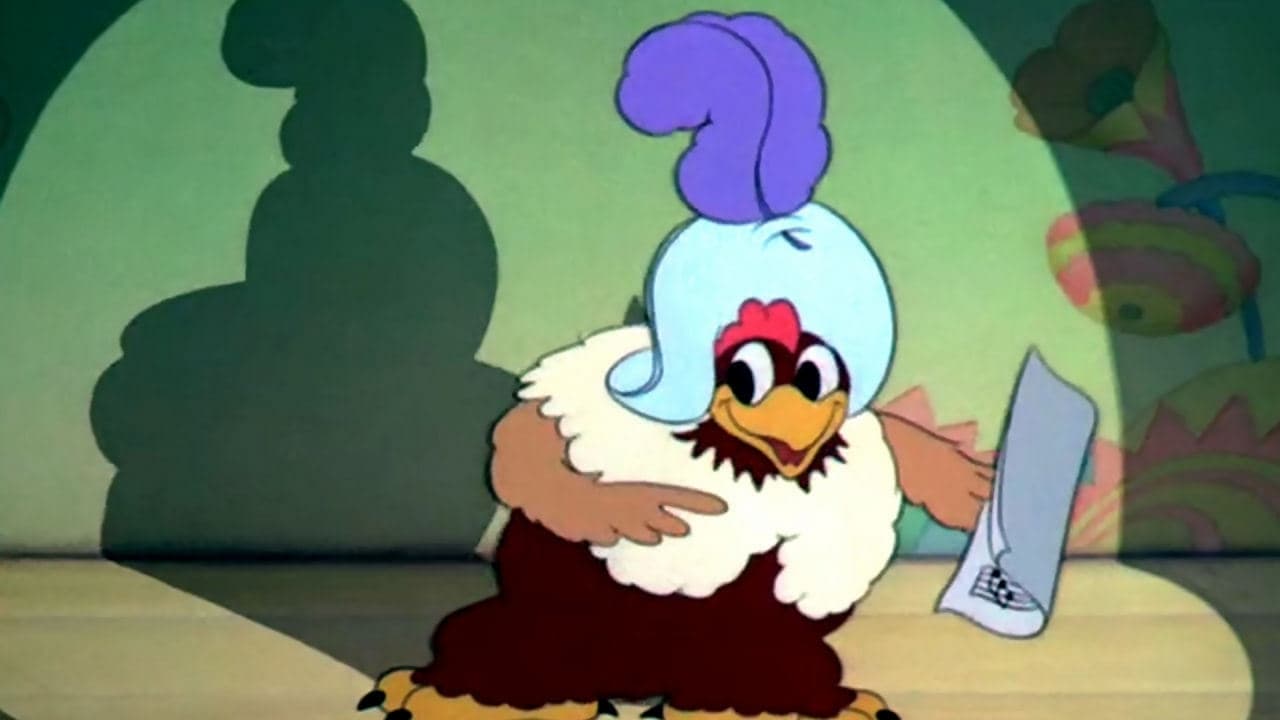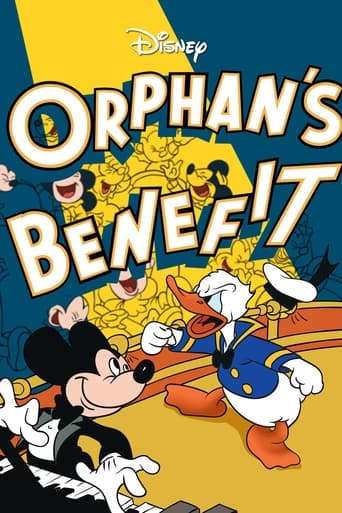

This is a color remake of the original black and white 1934 cartoon of the same name and soundtrack. Here, Mickey and his friends put on a benefit show for orphans. The plot line for this story sounds touching and meaningful enough, but the orphans themselves were actually pretty mischievous with no redeeming qualities. They torment poor Donald Duck, who tries to recite nursery rhymes for them. Donald got the brunt of all the mean jokes and gags from the orphans.While the animation of this color remake is very nice and seeing Mickey team up with Donald Duck and Clara Cluck is a treat, the overall cartoon is not very entertaining or funny.Grade D--
... View MoreTHE REMAKE HAS long been a staple of the great Hollywood motion picture business. But until now, we weren't aware of the extent to which redoing a picture had pervaded the studios, extending into the cartoon units. In this case, it is at the Walt Disney Studios that we find this absolute carbon copy of the black & white release from the previous decade.IF IT WEREN'T for the evolved, modified and updated appearance of the principal players, one could not be faulted for believing that this 1941 version was simply a colorized copy of the old 1934 original. The design, the background and the scripted action & gags all match in a nearly perfect manner.BY THIS TIME, Mickey had been either promoted or relegated to the straight man of the group. His stature as the "leader" of the Disney stable of characters was reassured and strengthened with his starring in the Sorcerer's Apprentice segment of FANTASIA that previous year. That left the comedy business up to the others. Goofy, Horace Horse Collar, Clarabelle Cow and the Hen.THAT LEFT ONLY the participation of Donald Duck, who had by this time affixed his rising star to the very zenith of the animated comedy. His reprising of his 1934 performance seems to be a case of spinning his wheels and wasting time.ALTHOUGH IT SEEMS to be a sort of sacrilege to even think, let alone to write or say, the animation in this installment appears to be just a trifle rough, poorly executed and even somewhat "limited"(a word that one never uses in reference to Disney).
... View MoreOrphan's Benefit is a very good cartoon, but it isn't the best of the Donald Duck cartoons, though probably one of his more popular ones. While the animation is very colourful, it was obvious it had been originally black and white, so some of the character movements were disappointingly stiff. And some of the jokes, while spot on most of the time, came across as slightly over-familiar in others. The music though is absolutely wonderful, one of the musical highlights of the cartoon was Clara Cluck singing the sextet from Lucia Di Lamenmoor. The orphans are adorable, and Donald voiced by the one and only Clarence "Ducky" Nash was on top form. While not a classic, this is well worth the watch. 8/10 Bethany Cox
... View MoreA Walt Disney MICKEY MOUSE Cartoon.Mickey and his pals put on an ORPHANS' BENEFIT for a theater full of little brats.This was a color remake of a black & white cartoon originally produced in 1934. Donald's nursery rhymes, the acrobatic apache dance performed by Horace Horsecollar, Clarabelle Cow & Goofy, and Mme. Clara Cluck's operatic aria are all awfully funny. Florence Gill does the clucking for Clara, Clarence Nash provides Donald with his unique voice, Walt Disney does the honors for Mickey.Walt Disney (1901-1966) was always intrigued by pictures & drawings. As a lad in Marceline, Missouri, he sketched farm animals on scraps of paper; later, as an ambulance driver in France during the First World War, he drew comic figures on the sides of his vehicle. Back in Kansas City, along with artist Ub Iwerks, Walt developed a primitive animation studio that provided animated commercials and tiny cartoons for the local movie theaters. Always the innovator, his ALICE IN CARTOONLAND series broke ground in placing a live figure in a cartoon universe. Business reversals sent Disney & Iwerks to Hollywood in 1923, where Walt's older brother Roy became his lifelong business manager & counselor. When a mildly successful series with Oswald The Lucky Rabbit was snatched away by the distributor, the character of Mickey Mouse sprung into Walt's imagination, ensuring Disney's immortality. The happy arrival of sound technology made Mickey's screen debut, STEAMBOAT WILLIE (1928), a tremendous audience success with its use of synchronized music. The SILLY SYMPHONIES soon appeared, and Walt's growing crew of marvelously talented animators were quickly conquering new territory with full color, illusions of depth and radical advancements in personality development, an arena in which Walt's genius was unbeatable. Mickey's feisty, naughty behavior had captured millions of fans, but he was soon to be joined by other animated companions: temperamental Donald Duck, intellectually-challenged Goofy and energetic Pluto. All this was in preparation for Walt's grandest dream - feature length animated films. Against a storm of naysayers, Walt persevered and over the next decades delighted children of all ages with the adventures of Snow White, Pinocchio, Dumbo, Bambi & Peter Pan. Walt never forgot that his fortunes were all started by a mouse, or that childlike simplicity of message and lots of hard work always pay off.
... View More